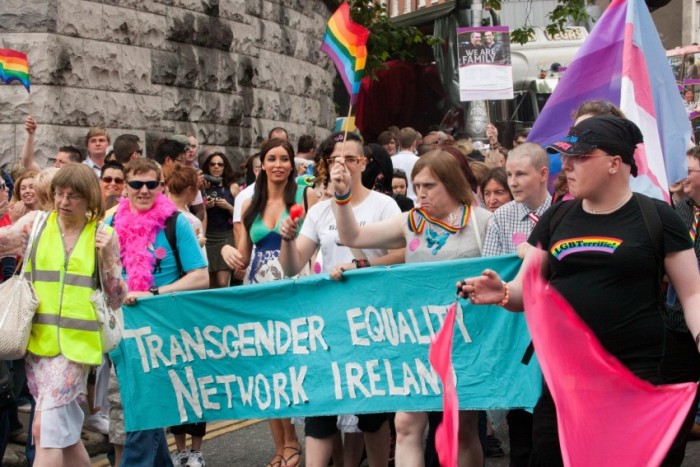John Bethell | Contributing Writer
Before we are even born, we are subject to a process called gender-conditioning. Our biological sex is discovered via ultrasound, and on this basis our parents decide our name, buy our clothes and Femplay toys, decorate our rooms. Blue things for boys, pink things for girls. Lego and Action Man for boys, Barbie and Ken for girls. And despite the greater gender equality in modern Western culture in terms of the subjects studied in school and at university, the choice of friends, work and domestic arrangements, and dress and leisure pursuits, there is still a presumption of conformity to society’s pre-requisites about what is appropriate for a man or a woman, a boy or a girl. Too great a deviation from the pre-requisites results in anxiety from bystanders and often the bullying of those who exhibit these deviations: people with gender identity disorder and/or transgender people – sufferers of gender dysphoria.
“There’s a gender in your brain and a gender in your body. For 99% of people, those things are in alignment. For transgender people, they’re mismatched. That’s all it is. It’s not complicated, it’s not a neurosis. It’s a mix-up. It’s a birth defect, like a cleft palate.”
The above are the words of Chaz Bono, born Chastity, of Sonny Bono and Cher, and a transgender man who underwent transition after profound feelings of discomfort with his birth sex. This disjuncture between mind and body has been termed “Gender Identity Disorder,” (GID) a condition whereby people cannot fit into the gender role society has created for them according to their sex.
“It seems clear that the weight of current scientific evidence suggests a biologically-based, multi-factorial etiology for transsexualism”
The etiology of GID is seen to be multi-causal. It can be brought on by hormone imbalances, such as patients with Androgen Insensitivity Syndrome. An individual with this condition has XY chromosomes, so it would be expected that the individual’s gonads would develop into testes as opposed to ovaries, that the individual has a penis rather than a vagina, and that the individual’s brain takes on male characteristics. But with cAIS, despite the presence of the Y–chromosome, the foetus has a high degree of resistance to the effects of the androgens (of which the most well known is testosterone). Consequently it is not affected by their masculinising influence. GID is also triggered by psychological abuse, and propagated by societal and environmental factors. Importantly, a recent study by Professor Van Gooren of a region in the hypothalamus of the brain (which is smaller in women than in men) showed that in M-F transsexuals this region was of female size or smaller. Thus it seems clear that the weight of current scientific evidence suggests a biologically-based, multi-factorial etiology for transsexualism.
I was prompted to write this article by a talk given by Michael Farrell, in association with DU Gender Equality Soc. Farrell is an Irish civil rights activist, writer and former leader of People’s Democracy, who has since 1997 been closely involved in the case of Lydia Foy, a trans-woman whose quest for her birth certificate to reflect her new sex has been denied, though she was able to obtain a new passport, driving licence, medical card, and polling card. Before this point, Foy had lost her children and her job as a dentist, and has since lived an impoverished existence.
“Seventeen years on from Lydia Foy’s first court case, the legislation and rights transgender people need and deserve have not been given to them”
Farrell talked about his involvement in the Foy case as a solicitor for FLAC (Free Legal Advice Centre) and about the situation as regards legislation and rights for transgender people living in Ireland. His message was simple: seventeen years on from Lydia Foy’s first court case, the legislation and rights transgender people need and deserve have not been given to them. And that the number one cause of the so-called “sex-change regret” (as seen with patients like Walt Heyer, who was born a male in 1947, and has since transitioned from male to female, then from female to male again, over the course of the last thirty years) is the lack of recognition received by transsexuals, not the inadequacy of sex-reassignment surgery, though rich debate concerns the efficacy of the surgery.
GID has had remarkably large recent coverage, in such high profile cases as Caster Semenya, the South-African 800m athlete, Chaz Bono, and Larry, now Lana Wachowski (who co-directed the Matrix Trilogy), as well as depiction in such shows as Chicago Hope, ER and Law & Order, as well as three celebrated feature films, “Glen or Glenda?” (1953), “Ma Vie en Rose” (1997) and “Boys Don’t Cry” (1999). Given this attention, it is appalling that more progress has not been made in Ireland and elsewhere – current Irish legislation for transgender people still contravenes the European Declaration of Human Rights. Will the situation parallel the Norris case whereby the Government becomes an embarrassment and stubbornly refuses to change its laws? Farrell’s answer was clear: the question is not whether, but for how long.







